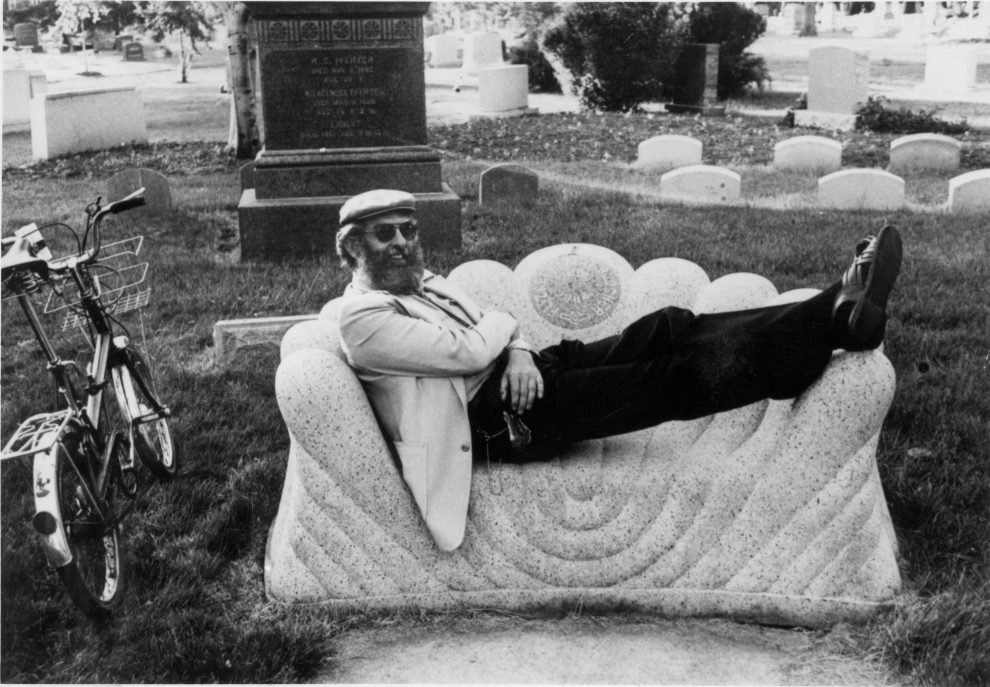Banham, Peter Reyner
March 2nd. 1922 – March 19th.1988
Born: Norwich, Norfolk, England – Died: London, England
Maverick architectural theorist and historian; modernism and pop-culture revisionist.
Banham’s parents were Percy Banham, a gas engineer, and Violet Banham (née Reyner). The younger Banham was educated at King Edward VI School, Norwich, UK. Too young to join the military during World War II, he worked as an engine fitter at the Bristol Aeroplane Company. He married Mary Mullett in 1946.
Banham entered the Courtauld Institute of London University in 1949 to study art history. During this time he wrote criticism on contemporary architecture for The Architectural Review and other journals.
Banham’s revisionist stance on Modern architecture influenced the Independent Group, a loose association of artists, architects and historians connected with the London-based Institute of Contemporary Art. As a critic, he particularly espoused modernist architecture. Banham wrote his doctoral thesis supervised by Nikolaus Pevsner; revised & expanded, it appeared as a book, ‘Theory and Design in the First Machine Age’, in 1960. His topic focused on Expressionism and Futurism’s contribution to architecture, but it became the definitive text throughout the world on the modern movement in architecture. In 1953 Banham was hired as deputy editor of The Architectural Review.
He began lecturing at the Bartlett School of Architecture, University College, London in 1960, joining the faculty as a senior lecturer in 1965. In 1966 his book on modernist architecture, ‘The New Brutalism’ appeared. He championed the 1960s futurism of the Archigram group. Banham rose to professor of the history of architecture in 1969. At the same time, Banham had developed a fascination with Los Angeles, California. His seminal ‘Los Angeles: The Architecture of Four Ecologies’ appeared in 1971. The following year he produced the film, “Reyner Banham Loves Los Angeles”.
The success of ‘Theory and Design’ and ‘Architecture of the Well-tempered Environment’, particularly in the United States, brought Banham an offer to teach there in 1976. He accepted the chair of the department of design studies at the State University of New York at Buffalo. By 1980, he had been named professor of art history at the University of California, Santa Cruz. In California he was a member of the Architect Selection Panel for the J. Paul Getty Trust, which, in 1984, selected Richard Meier to design the Getty museum in Santa Monica, CA. He joined the faculty of New York University’s Institute of Fine Arts as Sheldon H. Solow Professor of the History of Architecture in 1988, but never taught. Banham was diagnosed with cancer in 1987 and returned to England where he died at age 66.
Banham was known for “a propensity for a vigorous and often destructive criticism” (Times, London obituary). His appreciation for proto-Pop and Conceptual art resonated with the Independent Group’s fascination about the same. Banham’s work revised the 1940s history of the Modern Movement, including that of his mentor, Pevsner, which he saw as “a nice, tidy propagandist’s firmament, ordered by a cosmology so simple as to be almost simple-minded.” He was among the first architectural historians to “give the same degree of attention to the architecture of the everyday landscape that scholars give to monuments and cathedrals, and he was particularly entranced with the American cityscape” (Paul Goldberger; New York Times obituary).
